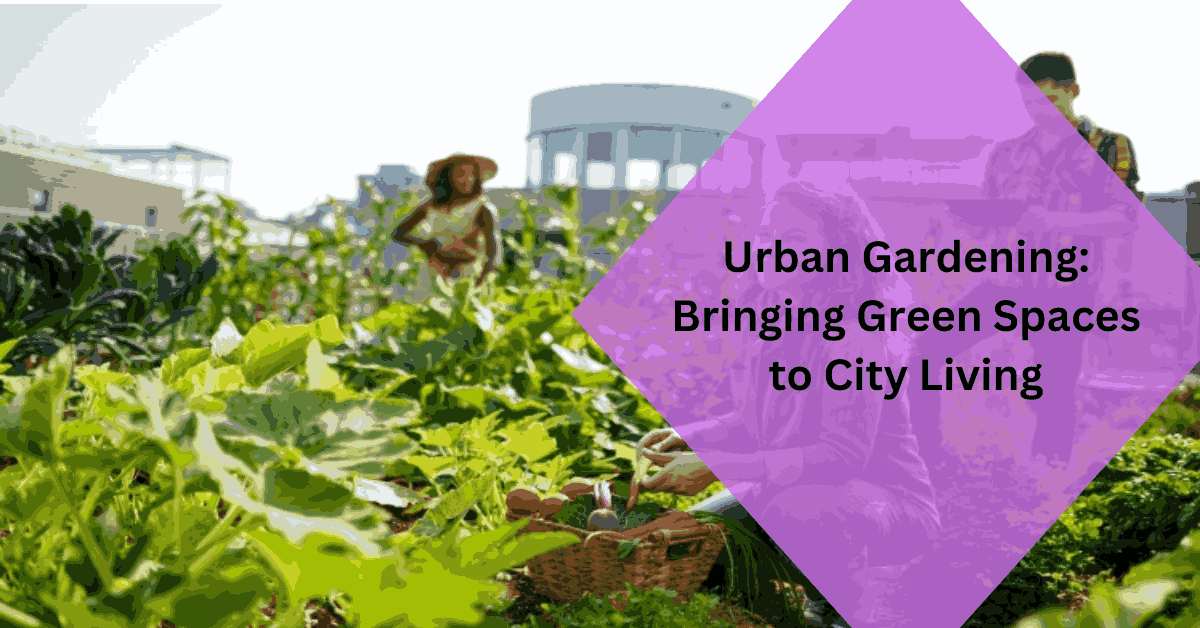Urban Gardening: Bringing Green Spaces to City Living
Urban gardening has emerged as a transformative practice that brings nature into the heart of bustling cityscapes.
In the midst of concrete jungles, urban gardening offers a creative and sustainable solution to reconnect individuals with the environment while enhancing the overall well-being of urban communities.
Let’s explore the concept of urban gardening and the myriad benefits it brings to city living.
Table of Contents
1. Utilizing Limited Space:
Urban gardening is characterized by its adaptability to limited spaces. Whether on rooftops, balconies, or small backyards, individuals can cultivate plants, herbs, and even vegetables in containers, vertical gardens, and raised beds. This efficient use of space allows city dwellers to enjoy the benefits of gardening without requiring expansive land.
2. Access to Fresh and Local Produce:
Urban gardens contribute to local food production, allowing residents to grow their own fresh produce. From tomatoes and herbs to greens and fruits, urban gardening provides an opportunity for individuals to cultivate a diverse range of crops, reducing reliance on commercially sourced items and promoting a connection to locally grown, seasonal foods.
3. Enhancing Air Quality:
Plants are natural air purifiers, absorbing pollutants and releasing oxygen. Urban gardening introduces more greenery into urban environments, helping to improve air quality. This is particularly significant in densely populated areas where air pollution is a prevalent concern.
4. Promoting Biodiversity:
Urban gardens serve as micro-ecosystems that support biodiversity. By cultivating a variety of plants, urban gardeners attract beneficial insects, birds, and other wildlife. This not only contributes to the ecological balance but also creates a harmonious coexistence between nature and urban life.
5. Stress Reduction and Well-being:
Engaging in gardening activities has been linked to stress reduction and improved mental well-being. The act of nurturing plants, getting hands in the soil, and witnessing the growth of greenery provides a therapeutic outlet for urban residents, offering respite from the stresses of city living.
6. Community Building:
Urban gardening fosters a sense of community among residents. Shared garden spaces or community gardens provide opportunities for neighbors to collaborate, share knowledge, and collectively care for the green spaces. This collaborative effort strengthens social bonds and creates a more cohesive urban community.
7. Educational Opportunities:
Urban gardens offer educational opportunities for individuals of all ages. Schools, community centers, and organizations can use urban gardens as outdoor classrooms, teaching valuable lessons about plant life cycles, sustainable practices, and the importance of environmental stewardship.
8. Aesthetic Improvement of Urban Spaces:
Beyond their practical benefits, urban gardens contribute to the aesthetic improvement of urban spaces. Greenery softens the harsh lines of buildings and pavements, adding beauty and tranquility to the urban landscape. Well-designed urban gardens become oases of calm amid the hustle and bustle of city life.
9. Temperature Regulation:
The presence of plants in urban areas can help regulate temperatures. Through a process known as transpiration, plants release moisture into the air, cooling the surrounding environment. This natural cooling effect can be particularly valuable in mitigating the urban heat island effect.
10. Sustainable Practices:
Urban gardening encourages sustainable practices such as composting, rainwater harvesting, and the use of organic gardening methods. These practices contribute to the overall sustainability of urban living by reducing waste, conserving water, and promoting environmentally friendly gardening techniques.
11. Food Security and Resilience:
Growing food locally in urban environments enhances food security and resilience. Urban gardeners have the opportunity to become more self-sufficient, especially in times of disruptions to the broader food supply chain. This localized approach to food production adds a layer of resilience to urban communities.
Conclusion:
Urban gardening transcends the traditional boundaries between city life and nature. By transforming available urban spaces into green havens, residents can enjoy the numerous benefits of gardening, from access to fresh produce and improved well-being to community building and environmental sustainability. As urban areas continue to evolve, the integration of urban gardening practices offers a promising avenue for creating healthier, more vibrant, and more sustainable cities.

